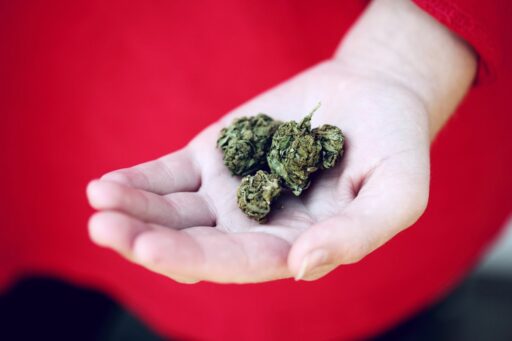The debate over the legalization of marijuana is a complex and multifaceted issue that touches upon public health, economic stability, legal justice, medical research, and social dynamics. Proponents argue that legalization could offer significant benefits, from therapeutic applications to economic gains, while critics raise concerns about public safety and the impact on youth. As this discourse continues, it is crucial to examine the evidence, understand the implications of legalization, and consider how policy changes could shape the future of cannabis in society.
Key Takeaways
- Legalizing marijuana could lead to significant economic benefits and reduce the burden on the criminal justice system.
- Medical marijuana has potential therapeutic benefits, but research is hindered by its classification as a Schedule I substance.
- The impact of legalization on youth and public health remains a contentious issue, with concerns about increased accessibility.
- Regulatory frameworks must be established to ensure safe consumption and address the social implications of public use spaces.
- Advocacy and policy change will play a critical role in navigating the future of cannabis legalization at both state and federal levels.
Understanding the Public Health Implications

Comparing Cannabis to Legal Substances
When considering the legalization of marijuana, it’s crucial to compare its effects and risks with those of substances that are already legal. Cannabis has been shown to have medical benefits, similar to legal substances like alcohol and tobacco, yet it presents a different profile of risks and benefits.
- Alcohol is associated with a high risk of addiction, liver disease, and other health complications.
- Tobacco is well-known for causing cancer, heart disease, and respiratory problems.
- Cannabis, while not without its risks, has been linked to fewer long-term health issues when used responsibly.
The debate on cannabis legalization often revolves around its comparison to these substances, with proponents arguing that if substances with higher associated health risks are legal, cannabis should also be considered for legalization.
However, concerns about increased accessibility and the potential for abuse must be addressed. The impact on public health, particularly in terms of driving under the influence and youth consumption, remains a contentious point in the discussion.
Analyzing the Impact on Youth and Society
The debate around cannabis legalization often pivots to its potential impact on youth and society at large. Concerns about accessibility and its influence on young people are paramount. Policies and educational programs are being crafted to mitigate risks associated with increased availability. For instance, the Youth Mental Health Research Act aims to bolster mental health resources, addressing one of the key societal concerns.
- The Youth Financial Learning Act focuses on improving financial literacy among secondary school students, indirectly preparing them for responsible decision-making.
- Bills like the Real Education and Access for Healthy Youth Act advocate for comprehensive health and relationship education, which could include substance use awareness.
It is essential to balance the potential benefits of legalization with proactive measures to safeguard the well-being of the younger population.
Legislation such as the SPEAK Act underscores the importance of accessible health care information, which is crucial in a society where cannabis might be legal. The integration of such measures into the broader framework of legalization is critical for ensuring that the impact on youth is both understood and addressed.
Addressing the Concerns of Increased Accessibility
With the potential legalization of marijuana, concerns about increased accessibility and its implications are paramount. Public health warnings and education are crucial in mitigating risks associated with cannabis use. A systematic approach to informing the public can lead to improved health indicators, as seen in other health warning initiatives.
- Mandating clear health warnings on cannabis products
- Implementing educational campaigns about the risks of overconsumption
- Ensuring responsible retailing practices to prevent underage access
While increased accessibility may raise valid concerns, it is essential to balance these with the benefits of regulation, such as quality control and the elimination of illicit markets.
It is also important to consider the role of technology and legislation in promoting accessibility while safeguarding public health. Recent bills, such as the HR5813 and HR1328, aim to establish standards for accessibility in various sectors, which could serve as a model for cannabis product information dissemination.
Economic and Legal Considerations

The Financial Benefits of Legalization
The debate around the legalization of marijuana often pivots to its economic implications. Legalizing cannabis presents a multifaceted opportunity for economic growth. One of the most immediate effects is the potential for job creation across various sectors, including agriculture, retail, and regulation.
Beyond employment, the legalization of cannabis opens up significant streams of tax revenue. States that have legalized marijuana have seen substantial increases in their tax collections, which can be allocated to public services such as education and healthcare. Here’s a succinct overview of the financial benefits:
- Job Creation: New opportunities in cultivation, distribution, and sales.
- Tax Revenue: Increased state and federal tax collections.
- Business Growth: Expansion of ancillary businesses supporting the cannabis industry.
- Investment Opportunities: Attraction of investors and growth in financial markets.
- Cost Savings: Reduction in law enforcement and judicial expenditures.
The economic advantages of legalizing marijuana extend beyond direct financial gains. They also include cost savings from a reduced burden on the criminal justice system, which currently expends significant resources on the prosecution and incarceration of non-violent cannabis offenses.
It’s important to recognize that while the financial benefits are compelling, they must be balanced with responsible regulation to ensure public safety and prevent misuse.
Reducing the Burden on the Criminal Justice System
The legalization of marijuana presents a significant opportunity to reduce the burden on the criminal justice system. By reclassifying marijuana-related offenses, resources can be reallocated to more serious crimes, easing the strain on law enforcement, courts, and correctional facilities.
- Decriminalization of marijuana can lead to fewer arrests and incarcerations, particularly for non-violent drug offenses.
- Expungement initiatives, such as those proposed in the Fresh Start Act of 2023, facilitate the clearing of criminal records for past marijuana offenses, aiding in social reintegration.
- Pretrial discretion, as seen in the Smarter Pretrial Detention for Drug Charges Act of 2023, allows courts to assess the necessity of detention on a case-by-case basis, potentially reducing unnecessary pretrial incarceration.
The shift towards alternative measures, including diversion programs for caregivers and parents, as outlined in the FAMILIES Act, underscores a move towards a more compassionate and pragmatic approach to drug-related offenses.
The implications of these changes are profound, not only in terms of cost savings but also in addressing disparities and the persistence of inequality in the criminal justice system. The potential for a more equitable legal landscape is on the horizon, with marijuana legalization acting as a catalyst for broader criminal justice reform.
Regulatory Frameworks for Safe Consumption
The establishment of regulatory frameworks is crucial for ensuring safe cannabis consumption. States are actively developing rules for consumption lounges, which vary widely across the country. Not all states with legalized cannabis permit these lounges, and the regulations can differ significantly from one jurisdiction to another.
- California: While consumption lounges are legal, many local jurisdictions have opted out.
- Colorado: Lounges cannot sell alcohol or food, and entry is restricted to those over 21.
- District of Columbia: On-premises consumption of medical cannabis is allowed in designated areas.
- Illinois: Local governments may authorize BYOC (bring your own cannabis) lounges.
- New Mexico: Consumption lounges are permitted with local approval, under certain conditions.
- New York: Lounges are legal only in municipalities that have opted in.
The key to successful regulation lies in balancing public health concerns with individual freedoms. This balance ensures that while consumers have safe places to enjoy cannabis, the community is also protected from potential adverse effects.
It’s important for entrepreneurs and consumers alike to stay informed about the evolving legal landscape. As the industry grows, so does the need for comprehensive and clear guidelines that safeguard all stakeholders involved.
Medical Marijuana: Separating Fact from Fiction

The Therapeutic Potential of Cannabis
The exploration of cannabis-based treatments is an evolving field, with a focus on the diverse applications that cannabinoids may offer. The main psychoactive component, THC, is often highlighted for its intoxicating effects, but it’s the non-psychoactive compound, CBD, that has garnered attention for its potential medical benefits without the ‘high’.
- CBD has been used to provide relief from conditions such as epilepsy, pain, anxiety, and nausea.
- Despite the therapeutic promise, research into medical marijuana is challenging due to its classification as a Schedule I substance.
- This classification implies a high risk for abuse and no accepted medical use, making rigorous scientific evaluation difficult.
The true costs and benefits of legalization, particularly for medicinal use, remain a complex issue, with the need for more structured research to fully understand the implications.
While some states have implemented laws specifically for the use of CBD extracts, often in oil form, the debate continues on whether broader legalization of marijuana is necessary for medical purposes. The lack of rigorous testing comparable to pharmaceutical standards is a significant hurdle in substantiating the therapeutic claims of cannabis.
Challenges in Cannabis Research and Regulation
The landscape of cannabis research is fraught with obstacles. Marijuana’s classification as a Schedule I substance severely hampers scientific inquiry, as it is deemed to have a high potential for abuse with no accepted medical use. This classification restricts researchers’ access to cannabis and limits the scope of their studies.
Despite the growing acceptance of medical marijuana, the data we have is often derived from animal studies or observational research. These studies are inherently limited by their reliance on self-reported usage, which is predominantly from recreational users. As a result, it’s tough to accurately measure dosage and frequency, making it challenging to draw reliable conclusions.
Moreover, the absence of standardized testing for cannabis impairment poses significant issues, particularly when considering the legal implications of cannabis consumption lounges and impaired driving. The lack of rigorous testing akin to what is expected for pharmaceuticals leaves a gap in our understanding of medical marijuana’s true efficacy and safety profile.
The need for a more structured approach to cannabis research and regulation is evident. As the industry evolves, so must the frameworks that govern it, ensuring that they are based on sound scientific principles and public health considerations.
CBD and Alternative Treatments
While the debate on marijuana legalization continues, CBD (cannabidiol) has emerged as a non-intoxicating compound with significant medical benefits. Unlike THC, CBD does not produce a ‘high’ and is often used to alleviate symptoms such as pain, anxiety, and nausea. The legal landscape for CBD is evolving, with legislation like the Hemp and Hemp-Derived CBD Consumer Protection and Market Stabilization Act of 2023 aiming to clarify its status.
The potential of CBD extends beyond the common perception of cannabis, offering a glimpse into the future of alternative treatments without psychoactive effects.
CBD’s versatility is highlighted in its application for psychiatric conditions. A critical review suggests that CBD could ameliorate conditions such as schizophrenia, substance use disorders (SUDs), and post-traumatic stress disorder (PTSD). However, the evidence base for these benefits is still developing, and further research is necessary to fully understand CBD’s therapeutic potential.
The following table summarizes the current legislative efforts related to CBD and alternative treatments:
| Bill Number | Title | Purpose |
|---|---|---|
| HR1610 | Hemp and Hemp-Derived CBD Consumer Protection and Market Stabilization Act of 2023 | To make hemp and CBD lawful for use as dietary ingredients. |
| HR3616 | FAA Medication Inclusion Bill | To include opioid overdose treatment in aircraft emergency kits. |
| HR1458 | Access to Prescription Digital Therapeutics Act of 2023 | To cover prescription digital therapeutics under Medicare and Medicaid. |
Social Dynamics and Legalization

The Evolution of Public Perception
The United States’s relationship with marijuana has undergone a significant transformation over the years. From a widely accepted agricultural crop to a controversial substance, the public’s view on cannabis has been shaped by various social, legal, and cultural factors.
- Colonial Era: Hemp encouraged for production
- Early 1900s: Rising concerns and regulations
- 1930s-1970s: Criminalization and the war on drugs
- 1990s-present: Gradual legalization and medical use acceptance
The shift in perception is also reflected in the changing legal landscape, with numerous states adopting policies that decriminalize or legalize cannabis for medical or recreational use. This evolution is indicative of a broader cultural shift towards a more nuanced understanding of the plant’s benefits and risks.
The changing public perception of cannabis is not just a reflection of societal trends but also a driver of policy reform and innovation in the industry.
Cannabis Consumption Lounges and Social Spaces
As the legalization of cannabis continues to spread, consumption lounges are emerging as a novel way for adults to enjoy cannabis in a social setting. These establishments, often likened to bars for cannabis users, provide a space where individuals can gather, consume, and share experiences in a legal and regulated environment.
The establishment of consumption lounges represents a significant shift in the social dynamics of cannabis use, offering a communal space that normalizes and regulates its consumption.
However, the landscape for these lounges varies widely across states, with differing regulations impacting their operation. For instance, some states allow the sale of cannabis products on-site, while others only permit patrons to bring their own. Here’s a quick overview of the current status in various states:
- California: Legal but locally restricted
- Colorado: No alcohol or food sales; 21+ only
- District of Columbia: Permitted with regulations
- Maryland: BYOC (Bring Your Own Cannabis) policy
- Massachusetts: Pilot program dropped; lounges not allowed
- Michigan: Regulations in place
- New Mexico: Local jurisdictions may allow lounges
- New York: Legal in opted-in municipalities
The evolution of these lounges is closely watched by both proponents and opponents of cannabis legalization, as they play a crucial role in shaping the future social fabric of communities where cannabis is legal.
The Influence of Legalization on Workplace and Productivity
The legalization of cannabis brings with it a complex set of challenges and considerations for the workplace. Employers face significant challenges managing the risk, safety, and cost impacts of increased use of cannabis. With the potential for higher consumption rates among employees, businesses must navigate the implications for workplace safety and productivity.
- Workplace Safety: Legalization may correlate with an uptick in workplace injuries, particularly among younger workers.
- Productivity Concerns: There is a concern that increased cannabis use could lead to decreased productivity and increased absenteeism.
- Policy Development: Companies are tasked with developing clear policies regarding cannabis use to maintain a safe and productive work environment.
The debate on cannabis legalization often overlooks the nuanced effects it may have on workplace dynamics. While some argue that responsible use does not impede performance, others point to the need for stringent policies to mitigate potential risks.
The Path Forward: Advocacy and Policy Change

The Role of Petitions and Public Campaigns
The grassroots movement for marijuana legalization has often found its strength in the power of petitions and public campaigns. Public campaigns serve as a catalyst for change, mobilizing support and raising awareness about the benefits of legalization. These campaigns can take various forms, from social media blitzes to city-wide marches, each playing a pivotal role in shaping public opinion and influencing policymakers.
- Petitions provide a formal mechanism for citizens to express their support for legalization, often leading to legislative reviews or referendums.
- Public campaigns amplify the message, engaging a broader audience and encouraging discourse on the topic.
- Educational initiatives within these campaigns help dispel myths and provide factual information about cannabis.
The most significant advantage of public campaigns is their ability to bring the issue of legalization into the public eye, fostering a transparent and informed dialogue.
The success of these efforts is not just anecdotal; it is reflected in the legislative advancements seen in various countries. The shift from criminal activity to a regulated market has led to increased safety and transparency, allowing for quality control and consumer protection.
Navigating Federal and State Policy Discrepancies
The landscape of cannabis legalization in the United States is a patchwork of state laws that often conflict with federal regulations. Navigating these discrepancies is crucial for stakeholders, from businesses to consumers. At the federal level, marijuana remains a Schedule I substance, indicating a high potential for abuse and no accepted medical use. This classification creates a significant hurdle for states that have legalized marijuana, either for medical or recreational use.
States have taken varied approaches to cannabis policy, resulting in a complex legal environment. For example, some states have fully legalized cannabis, while others allow only medical use or have decriminalized possession. The table below summarizes the current status of cannabis legalization across a selection of states:
| State | Medical Use | Recreational Use | Decriminalized |
|---|---|---|---|
| California | Yes | Yes | Yes |
| Texas | Limited | No | No |
| New York | Yes | Yes | Yes |
| Florida | Yes | No | Limited |
The challenge for policymakers and advocates is to reconcile these state-level initiatives with federal law. This requires a nuanced understanding of the legal landscape and a commitment to advocating for change that respects the will of the electorate while ensuring public safety and health.
Employers, in particular, must stay informed about both state and federal laws to navigate the legal safety and compliance landscape effectively. The discrepancies between state and federal policies can lead to confusion and legal challenges, especially in states where cannabis is legal in some form but prohibited under federal law.
Preparing for the Future of Cannabis Legalization
As the landscape of cannabis legalization evolves, stakeholders must be proactive in shaping the future. Ensuring responsible consumption and access is paramount as we move forward. The establishment of consumption lounges, akin to the ones anticipated in Nevada, reflects a societal shift towards normalized, regulated use in social settings.
To prepare for the future, several key steps should be considered:
- Monitoring and adapting to policy changes at both federal and state levels.
- Engaging with community leaders and public health experts to address societal concerns.
- Investing in education and responsible usage campaigns to mitigate potential risks.
The future of cannabis legalization is not just about the legal status but also about integrating it responsibly into society. It’s about creating a framework that supports safety, education, and respect for individual choices.
With the advent of online platforms like the Marijuana News website, featuring a comment section and age verification, the dialogue around cannabis is becoming more accessible and informed. This digital engagement is crucial for dispelling myths and fostering a community of well-informed advocates.
Conclusion
In the debate over marijuana legalization, it is crucial to weigh the potential benefits against the concerns raised. While some argue that legalization could lead to public health and safety issues, others see it as an opportunity for medical advancement and economic growth. The evidence from states where marijuana is legal suggests that, with proper regulation, the risks can be managed while reaping the benefits of decreased criminalization, increased tax revenue, and medical research opportunities. Ultimately, the decision to legalize marijuana should be informed by a careful consideration of all factors, with an emphasis on creating policies that protect public health and safety while acknowledging the changing societal attitudes towards cannabis.
Frequently Asked Questions
What are the public health implications of legalizing marijuana?
The public health implications of legalizing marijuana include potential changes in consumption patterns, impacts on youth and society, and concerns about increased accessibility. Comparisons with legal substances and analyses of medical data are needed to fully understand these implications.
Could the legalization of marijuana lead to economic benefits?
Yes, legalization could lead to economic benefits such as tax revenue generation, job creation, and a reduction in law enforcement and criminal justice costs. However, the full economic impact would depend on the regulatory frameworks established.
What is the therapeutic potential of cannabis?
Cannabis has been shown to have therapeutic potential for conditions like chronic pain, epilepsy, and certain psychological disorders. However, research is complicated by its Schedule I classification, which limits study due to high abuse potential and lack of accepted medical use.
How might legalization of marijuana affect workplace productivity and safety?
The impact of marijuana legalization on workplace productivity and safety is not fully understood. Studies suggest there may be an association between legalization and workplace injuries among younger workers, but more research is needed to draw definitive conclusions.
What role do public campaigns and petitions play in the legalization of marijuana?
Public campaigns and petitions play a significant role in raising awareness, shaping public perception, and influencing policy change regarding marijuana legalization. They can also reflect public opinion and spur legislative action.
What are the arguments against the legalization of marijuana?
Arguments against legalization include concerns about public health, safety, and the social impact of increased marijuana use. Critics argue that the costs associated with use outweigh potential benefits and that legalization could lead to higher rates of addiction and youth consumption.





